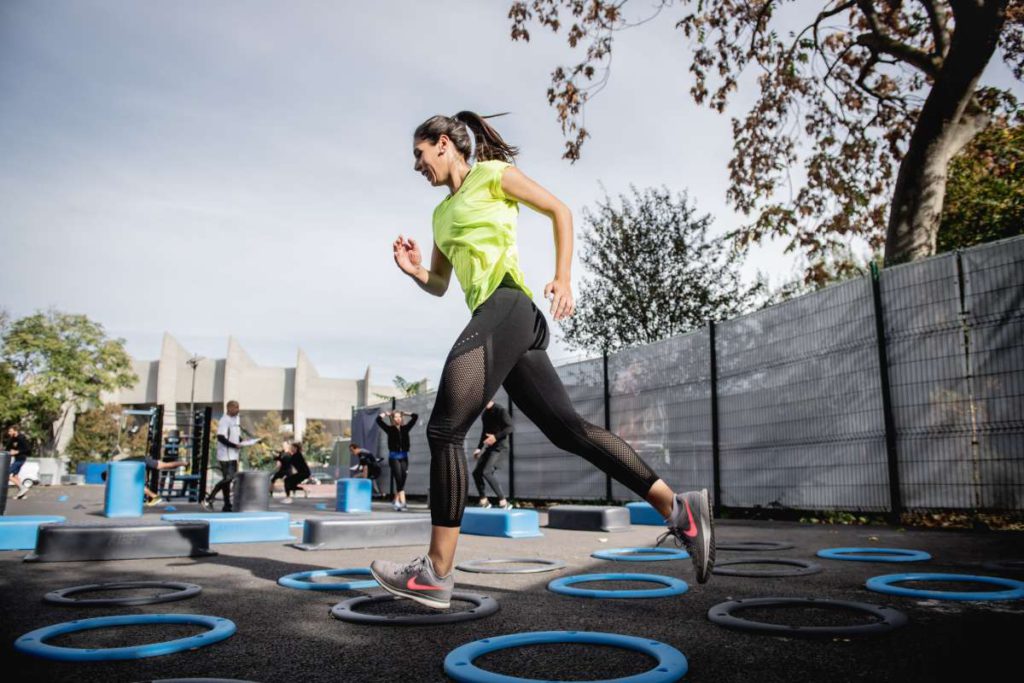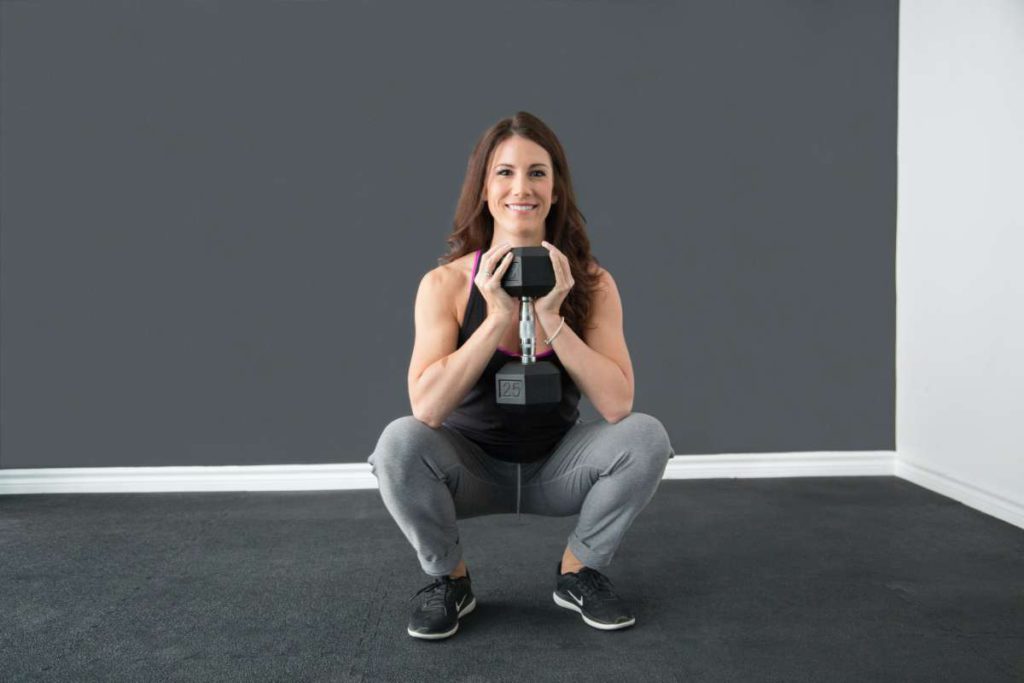Exercise is an important part of managing type 2 diabetes. When you’re physically active, your cells become more sensitive to insulin, which is the “key” that “unlocks” the cells so that glucose can enter and fuel your body. Exercise also helps you lose weight and maintain a healthy weight, which is beneficial for managing type 2 diabetes.
For many people with type 2 diabetes, a lack of physical activity is a contributor to the disease — and the prospect of developing an exercise regimen can feel overwhelming. Like food science, exercise science is complex, and once you head down the rabbit hole of reading up on it, you may come away even more confused than you were when you started.
Here, we offer a simple guide to lowering your blood sugar with exercise, which also helps with weight loss, heart disease prevention, and overall better health.
How does exercise help lower blood sugar?
Exercise increases insulin sensitivity. The food you eat turns into glucose in your blood, which your cells use as fuel. After you eat, the high glucose levels in your blood trigger the release of insulin, a hormone produced in the pancreas. Insulin acts like a key that “unlocks” your cells to allow the glucose to enter.
When you have type 2 diabetes, your body doesn’t produce enough insulin or doesn’t use it effectively, which means your cells aren’t taking up enough of the glucose in your blood. This results in high blood sugar.
Exercise increases insulin sensitivity, which means that your cells respond better to insulin and take up more of the sugar in your blood—and not just while you’re exercising, but for up to 24 hours afterwards, too. In addition, when your muscles contract during physical activity, cells are able to take up glucose for energy whether or not insulin is available at all.
Exercise also helps you lose weight, which itself improves insulin sensitivity and lowers your blood sugar levels—and it helps reduce blood pressure and high cholesterol, which often co-occur with type 2 diabetes and further increase your risk for heart disease.
Daily physical activity lowers your short-term blood sugar levels from day to day, but regular exercise over time also lowers your A1C—the blood glucose test that gives you an average blood sugar level for the past two or three months.
When is the best time to exercise for blood sugar control?
Exercise timing is often overlooked in exercise guidelines for people with type 2 diabetes. But growing evidence suggests a link between high post-meal glucose levels and cardiovascular disease, and elevated blood sugar after meals can also increase your A1C and your risk for complications of diabetes.
Since exercise lowers blood sugar in real time, and it has a positive effect on insulin sensitivity for around 24 hours afterwards, exercising a half hour after you eat can considerably lower peak post-meal glucose levels.
In people who don’t have diabetes, the normal glucose level two hours after eating is 140 mg/dL or lower. For people with type 2 diabetes, the International Diabetes Federation recommends a glucose level of 160 mg/dL or below two hours after eating. The lower you can get your peak post-meal blood glucose levels, the better.
What types of exercise are best for type 2 diabetes?
Any exercise you do helps lower your blood sugar. There’s no single “best” exercise, duration of exercise, or exercise routine for reducing blood sugar. However, the two types of exercise everyone needs for optimal health—and that people with diabetes need for optimal blood sugar control—are cardiovascular exercise and strength training.
Cardiovascular exercise

Also known as “aerobic” or “cardio” exercise, a cardiovascular workout increases your heart rate, breathing rate, blood flow, and blood oxygen levels. Cardiovascular exercise involves using all of your large muscle groups for a sustained period of time.
The Centers for Disease Control recommends a minimum of 150 minutes of moderate-intensity cardio or 75 minutes of high-intensity cardio each week for optimal health. For people with type 2 diabetes, exercising more than this minimum is ideal.
Moderate-intensity vs high-intensity exercise
The difference between moderate-intensity and high-intensity exercise is how high your heart rate is while you’re exercising. This is based on your maximum heart rate or MHR. To estimate your MHR, subtract your age from 220. So if you’re a 50-year-old, your maximum heart rate is 170.
For moderate-intensity exercise, your heart rate should stay between 64 and 76 percent of your MHR. For high-intensity exercise, it should stay between 77 and 93 percent of your MHR. A wearable heart rate monitor will tell you your heart rate in real-time so that you can adjust your intensity as needed. To determine your ideal heart rate range for moderate and high-intensity workouts, multiply your MHR by .64 and .76 (moderate range) and by .77 and .93 (high range).
The 50-year-old’s target heart rate for moderate exercise is 108 beats per minute (bpm) to 129 bpm, because the MHR of 170 x .64 = 108, and 170 x .76 = 129.
However, you don’t need to measure your heart rate to determine whether you’re exercising at a moderate or high intensity—while you’re exercising, try talking. If you can talk while you’re exercising, but you can’t sing more than a few words without pausing for breath, you’re working at moderate intensity. If you can’t speak more than a few words without pausing for a breath, you’re working at high intensity.
What counts as moderate- and high-intensity exercise?
The sky’s the limit when it comes to activities that count as exercise. To help you stay motivated to exercise, choose activities that you enjoy.
Moderate-intensity activities include brisk walking, water aerobics, rollerskating or rollerblading on a flat trail, doubles tennis, ballroom dancing, general gardening or yard work, and riding a bike under 10 mph on mostly flat terrain.
High-intensity activities include speed walking, jogging, running, singles tennis, aerobic dancing, jumping rope, swimming laps, hiking uphill, heavy gardening or yard work, and biking faster than 10 mph — or under 10 mph on hilly terrain.
Strength training for lower blood sugar

Strength training, also known as resistance or weight training, involves exercises that use your muscles to overcome oppositional forces. For optimal health, the Centers for Disease Control recommends two days of strength training per week in addition to the 150-plus minutes of moderate-intensity cardio activity.
Research shows that resistance training helps reduce the risk of type 2 diabetes by increasing muscle mass, reducing body mass index (BMI), improving insulin sensitivity, and increasing glucose transport. A meta analysis published in the journal Diabetes Therapy found that resistance training reduced A1C levels by 0.5% and increased muscle strength by 38 percent in people over the age of 60. It also showed that the intensity of the weight training may have more of an influence on A1C levels than duration, frequency, and volume. Here are some other benefits of strength training for type 2 diabetes:
Improves heart health. Strength training helps to increase “good” HDL cholesterol levels in the body and reduce “bad” LDL cholesterol.
Increases bone density. People with type 2 diabetes have a higher risk of bone fractures than people without it, and weight-bearing exercises strengthen the bones of the legs, hips, and spine to help reduce the risk of broken bones.
Reduces visceral belly fat. Visceral belly fat, which is the abdominal fat that surrounds vital organs like the liver, produces hormones that inhibit your body’s effective use of insulin, and exercise can reduce this fat by 50 percent in just 12 weeks.
Prevents muscle loss. As we age, our muscles lose mass, a condition called sarcopenia. Type 2 diabetes is a risk factor for accelerated muscle loss, and regular weight training helps prevent it.
Reduces the risk of diabetes complications. Unmanaged type 2 diabetes can lead to complications like peripheral neuropathy and vision loss due to reduced blood flow. Strength training helps improve blood flow to help reduce the risk of these problems.
What kinds of strength training exercises lower blood sugar?
Focus on weight training exercises that work your largest muscle groups—chest, back, shoulders, arms, abdominals and legs. For each exercise, do three sets of 10 to 12 reps each. Rest for one to two minutes between sets. The first five to six reps should be fairly easy, and the second five to six should be more difficult—the last two reps should be very difficult to complete, making your muscles burn uncomfortably.
If you have a gym membership, you can use weight machines or hand weights (dumbbells), or you can purchase dumbbells or resistance bands to use at home. Floor exercises, which use your own body weight to create resistance, are also great weight-bearing exercises. These include push-ups, sit-ups, lunges, squats, and planks. For floor exercises, perform as many reps as you can until your muscles refuse to do another. As with weight lifting, perform three sets of the exercise, and rest for a minute or two between sets.
Practice your resistance exercises two or three times a week on non-consecutive days. Allow 48 hours of recovery time after working each muscle group.
If you’re new to resistance training, consider joining a class, hiring a personal trainer, or using videos as you get started. This will help you learn a range of exercises and use the proper form to help prevent injury.
5 tips to help you get — and stay — motivated to exercise
If you need help staying motivated to exercise, you’re not alone. Especially if you’re new to daily exercise, it can be tough to get out there and do it. These tips can help.
Set goals. Especially for competitive people, setting personal goals for exercise can help you look forward to your daily routine and keep you motivated to achieve your goals for the personal satisfaction—and great health benefits—you’ll receive.
Do exercises you like. Any physical activity at the right intensity counts, so find something you enjoy to help you stay motivated to do it. Swimming, biking, walking, heavy gardening, boxing, softball, soccer, dancing, and climbing are just a few of the many options you have.
Listen to music or books. Create playlists of music that inspires you to move, or listen to an audiobook or podcast while you work out to keep your mind occupied as your body moves.
Get a dog. If you’re a dog-lover, a pet may be the motivation you need to get out and exercise every day. Dogs need daily walks, and your dog will keep you company while you get the exercise you need.
Find an exercise buddy. Talk to friends and family to find someone to work out with. Exercising with a buddy keeps you both motivated to show up for your sessions. You and your workout partner can keep each other motivated and accountable, and you can set goals together and celebrate when you achieve them.
Forward can help you manage your diabetes
As your primary care provider, Forward helps you manage your type 2 diabetes through a personalized approach to disease management and prevention. Membership includes access to our Weight Management Program and our Heart Health Program, which includes risk assessments, blood testing, and an individualized plan for staying healthy and preventing complications of diabetes. Through goal-setting, ongoing monitoring, and access to the app to track your progress, you’ll have the tools you need to take control of your health and stay motivated to reach your goals.


